Microeconomics AB224 Unit 4 Assignment: Marginal Utility and Demand
VerifiedAdded on 2023/04/21
|6
|1034
|194
Homework Assignment
AI Summary
This microeconomics assignment solution addresses key concepts including marginal utility, price elasticity of demand, and income elasticity. The solution begins with an analysis of utility maximization, demonstrating how a consumer allocates their budget to maximize satisfaction given different goods and their marginal utilities. It then delves into the calculation and interpretation of price elasticity of demand using the midpoint method, illustrating how changes in price affect the quantity demanded and the resulting impact on revenue. Finally, the assignment explores the relationship between price elasticity and income elasticity, clarifying how changes in price and income influence consumer behavior and demand patterns. The solution incorporates references to relevant economic theories and principles, providing a comprehensive understanding of the concepts discussed.
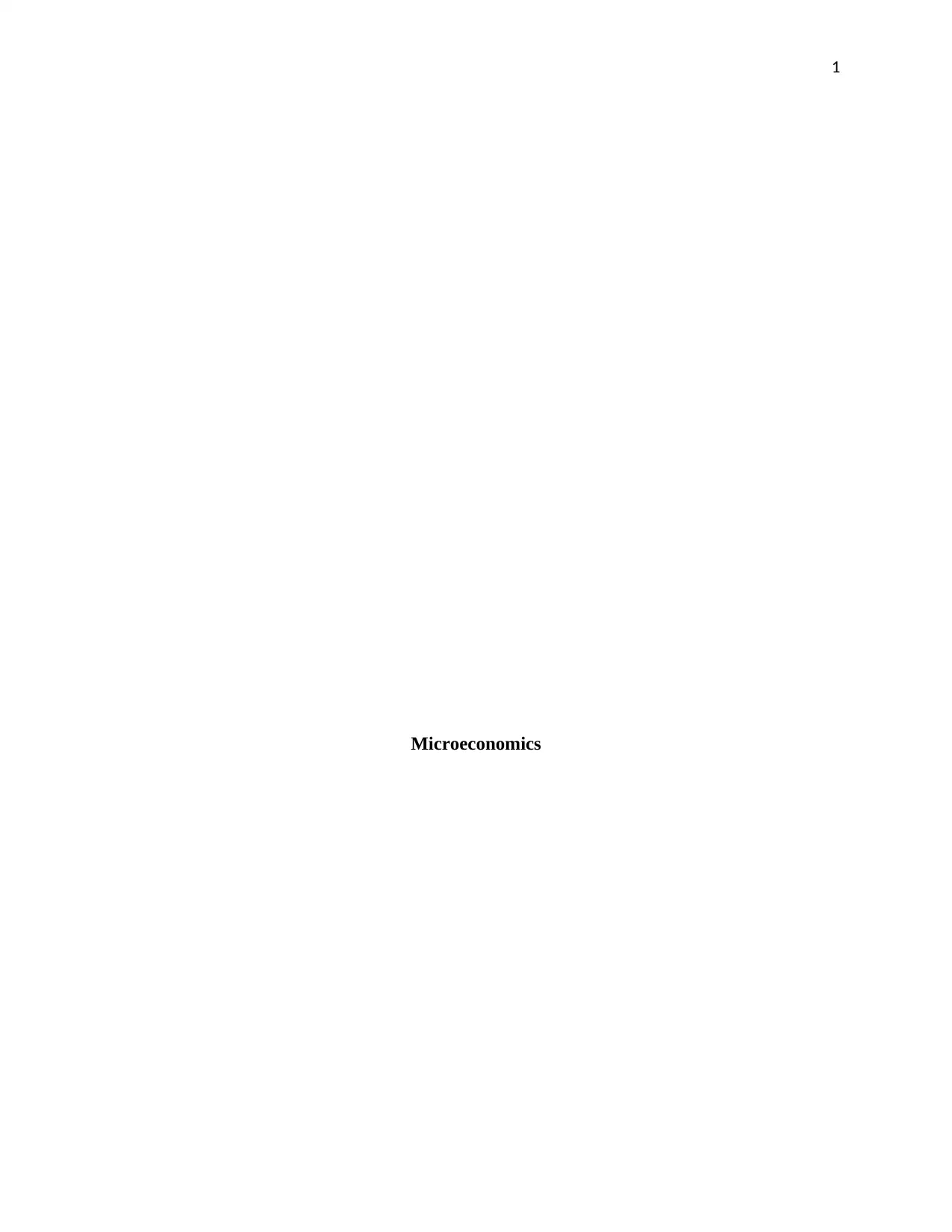
1
Microeconomics
Microeconomics
Paraphrase This Document
Need a fresh take? Get an instant paraphrase of this document with our AI Paraphraser
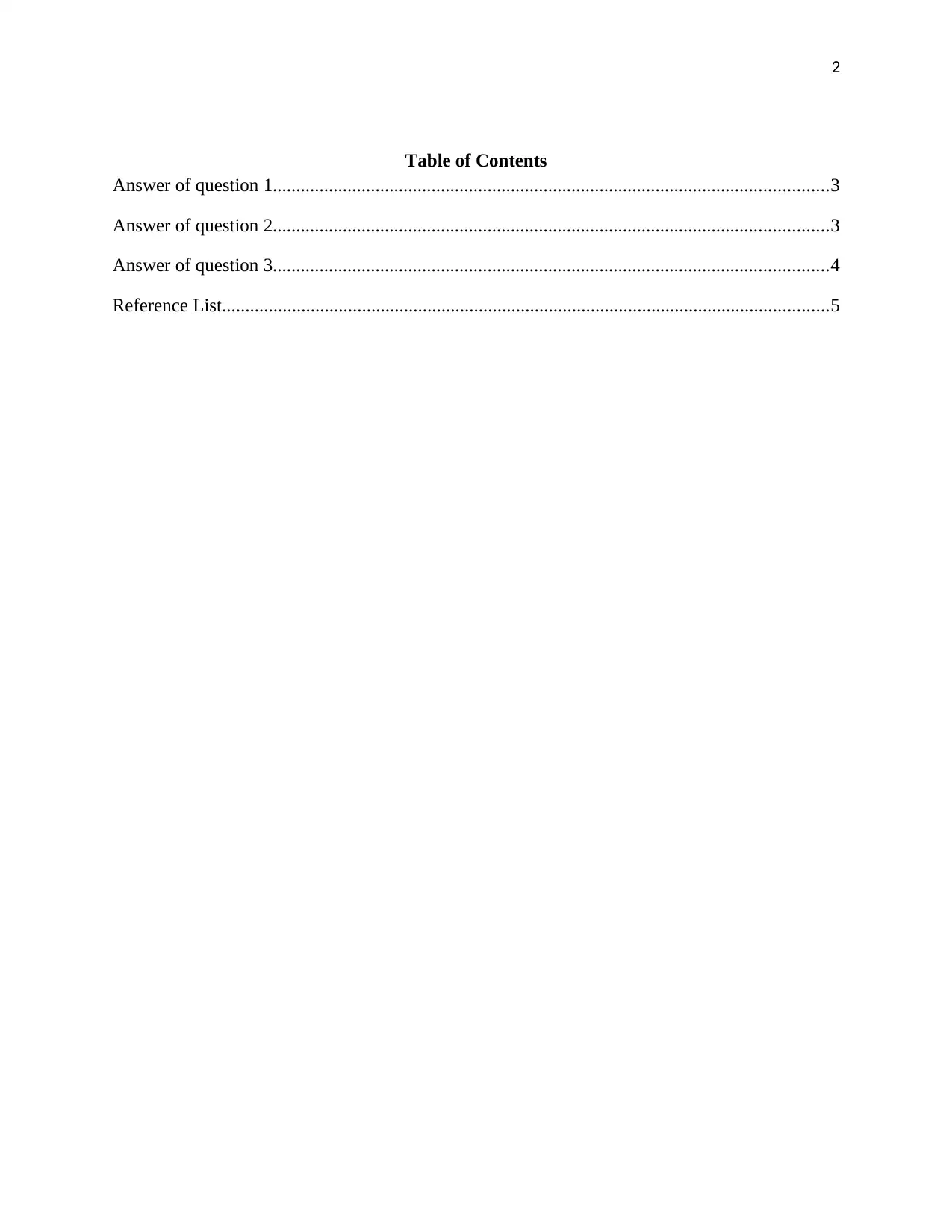
2
Table of Contents
Answer of question 1.......................................................................................................................3
Answer of question 2.......................................................................................................................3
Answer of question 3.......................................................................................................................4
Reference List..................................................................................................................................5
Table of Contents
Answer of question 1.......................................................................................................................3
Answer of question 2.......................................................................................................................3
Answer of question 3.......................................................................................................................4
Reference List..................................................................................................................................5
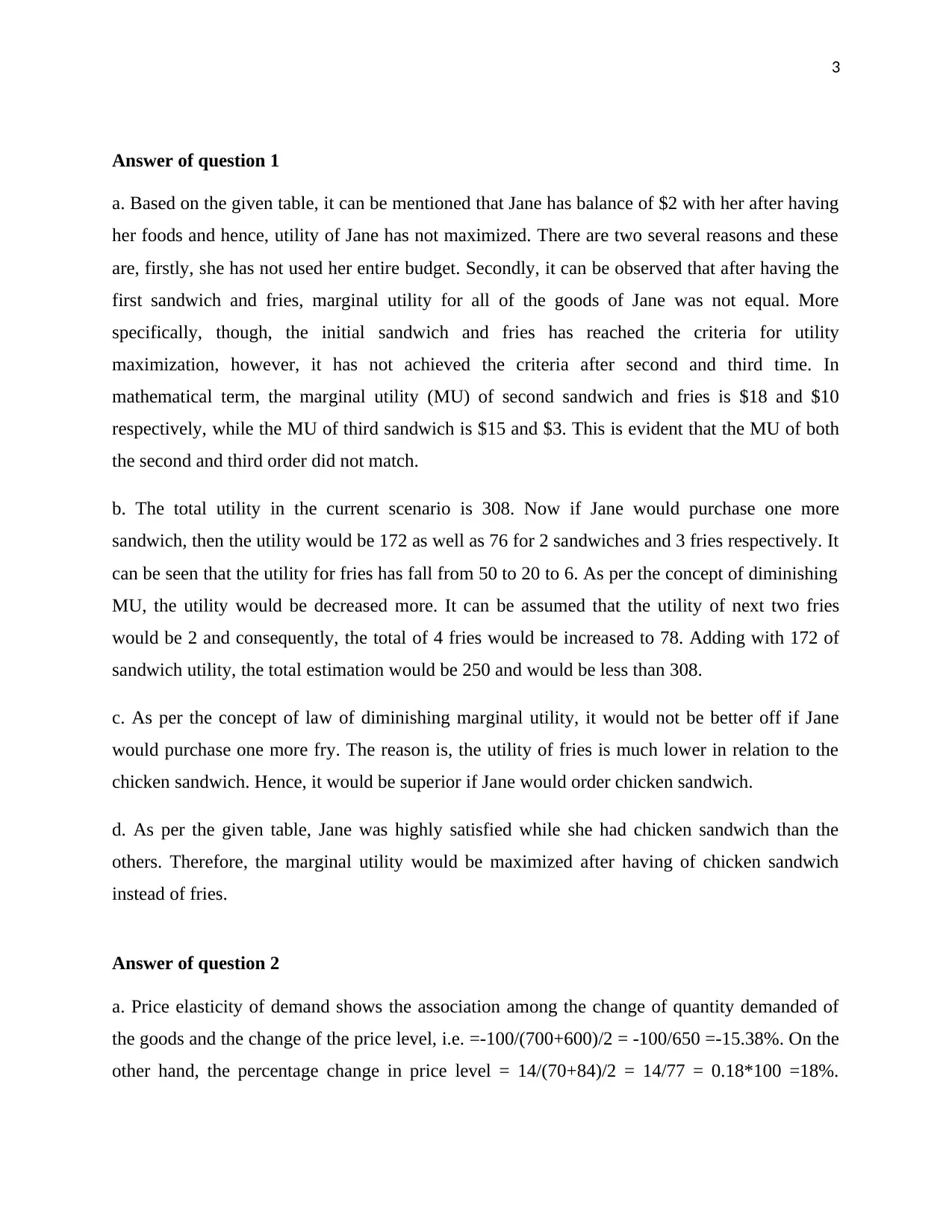
3
Answer of question 1
a. Based on the given table, it can be mentioned that Jane has balance of $2 with her after having
her foods and hence, utility of Jane has not maximized. There are two several reasons and these
are, firstly, she has not used her entire budget. Secondly, it can be observed that after having the
first sandwich and fries, marginal utility for all of the goods of Jane was not equal. More
specifically, though, the initial sandwich and fries has reached the criteria for utility
maximization, however, it has not achieved the criteria after second and third time. In
mathematical term, the marginal utility (MU) of second sandwich and fries is $18 and $10
respectively, while the MU of third sandwich is $15 and $3. This is evident that the MU of both
the second and third order did not match.
b. The total utility in the current scenario is 308. Now if Jane would purchase one more
sandwich, then the utility would be 172 as well as 76 for 2 sandwiches and 3 fries respectively. It
can be seen that the utility for fries has fall from 50 to 20 to 6. As per the concept of diminishing
MU, the utility would be decreased more. It can be assumed that the utility of next two fries
would be 2 and consequently, the total of 4 fries would be increased to 78. Adding with 172 of
sandwich utility, the total estimation would be 250 and would be less than 308.
c. As per the concept of law of diminishing marginal utility, it would not be better off if Jane
would purchase one more fry. The reason is, the utility of fries is much lower in relation to the
chicken sandwich. Hence, it would be superior if Jane would order chicken sandwich.
d. As per the given table, Jane was highly satisfied while she had chicken sandwich than the
others. Therefore, the marginal utility would be maximized after having of chicken sandwich
instead of fries.
Answer of question 2
a. Price elasticity of demand shows the association among the change of quantity demanded of
the goods and the change of the price level, i.e. =-100/(700+600)/2 = -100/650 =-15.38%. On the
other hand, the percentage change in price level = 14/(70+84)/2 = 14/77 = 0.18*100 =18%.
Answer of question 1
a. Based on the given table, it can be mentioned that Jane has balance of $2 with her after having
her foods and hence, utility of Jane has not maximized. There are two several reasons and these
are, firstly, she has not used her entire budget. Secondly, it can be observed that after having the
first sandwich and fries, marginal utility for all of the goods of Jane was not equal. More
specifically, though, the initial sandwich and fries has reached the criteria for utility
maximization, however, it has not achieved the criteria after second and third time. In
mathematical term, the marginal utility (MU) of second sandwich and fries is $18 and $10
respectively, while the MU of third sandwich is $15 and $3. This is evident that the MU of both
the second and third order did not match.
b. The total utility in the current scenario is 308. Now if Jane would purchase one more
sandwich, then the utility would be 172 as well as 76 for 2 sandwiches and 3 fries respectively. It
can be seen that the utility for fries has fall from 50 to 20 to 6. As per the concept of diminishing
MU, the utility would be decreased more. It can be assumed that the utility of next two fries
would be 2 and consequently, the total of 4 fries would be increased to 78. Adding with 172 of
sandwich utility, the total estimation would be 250 and would be less than 308.
c. As per the concept of law of diminishing marginal utility, it would not be better off if Jane
would purchase one more fry. The reason is, the utility of fries is much lower in relation to the
chicken sandwich. Hence, it would be superior if Jane would order chicken sandwich.
d. As per the given table, Jane was highly satisfied while she had chicken sandwich than the
others. Therefore, the marginal utility would be maximized after having of chicken sandwich
instead of fries.
Answer of question 2
a. Price elasticity of demand shows the association among the change of quantity demanded of
the goods and the change of the price level, i.e. =-100/(700+600)/2 = -100/650 =-15.38%. On the
other hand, the percentage change in price level = 14/(70+84)/2 = 14/77 = 0.18*100 =18%.
⊘ This is a preview!⊘
Do you want full access?
Subscribe today to unlock all pages.

Trusted by 1+ million students worldwide
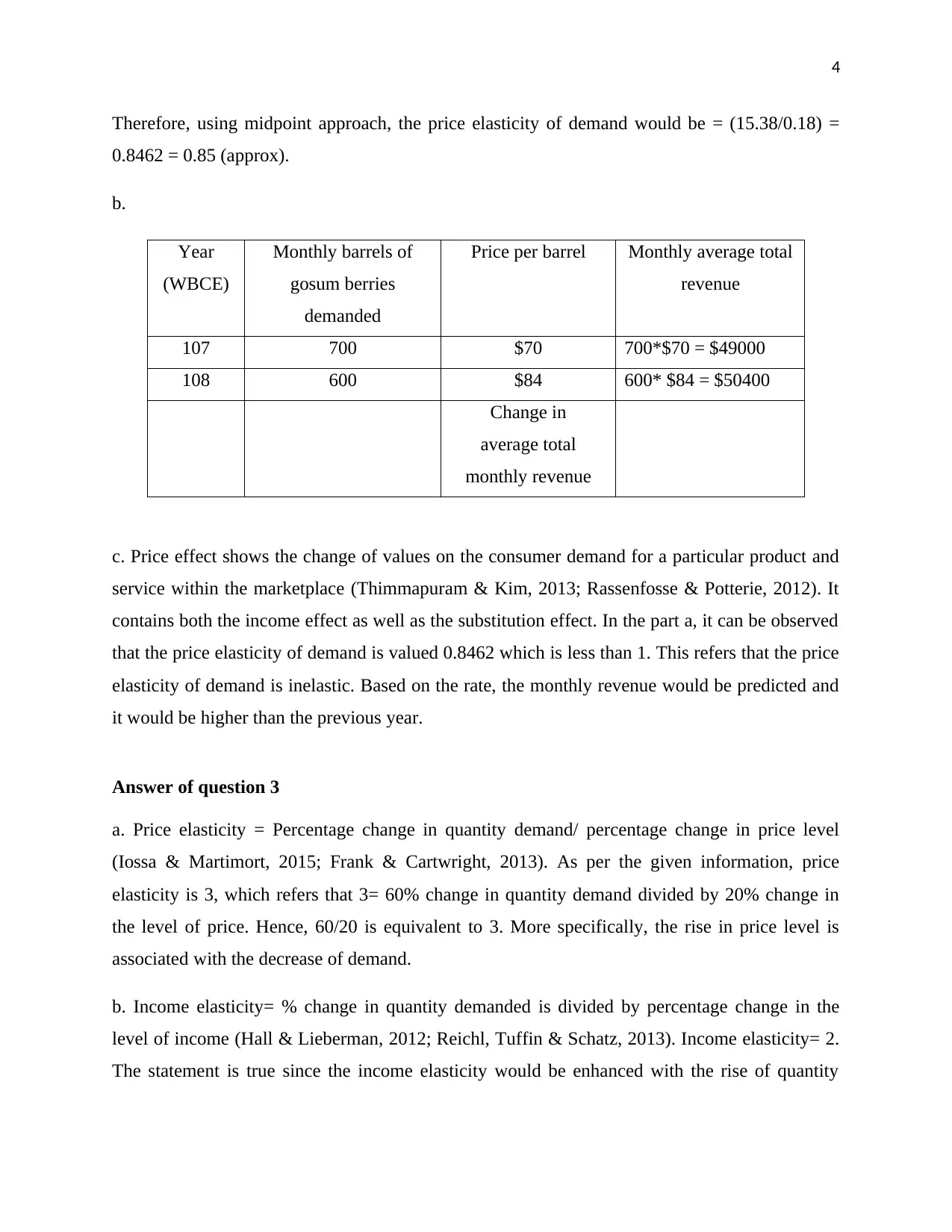
4
Therefore, using midpoint approach, the price elasticity of demand would be = (15.38/0.18) =
0.8462 = 0.85 (approx).
b.
Year
(WBCE)
Monthly barrels of
gosum berries
demanded
Price per barrel Monthly average total
revenue
107 700 $70 700*$70 = $49000
108 600 $84 600* $84 = $50400
Change in
average total
monthly revenue
c. Price effect shows the change of values on the consumer demand for a particular product and
service within the marketplace (Thimmapuram & Kim, 2013; Rassenfosse & Potterie, 2012). It
contains both the income effect as well as the substitution effect. In the part a, it can be observed
that the price elasticity of demand is valued 0.8462 which is less than 1. This refers that the price
elasticity of demand is inelastic. Based on the rate, the monthly revenue would be predicted and
it would be higher than the previous year.
Answer of question 3
a. Price elasticity = Percentage change in quantity demand/ percentage change in price level
(Iossa & Martimort, 2015; Frank & Cartwright, 2013). As per the given information, price
elasticity is 3, which refers that 3= 60% change in quantity demand divided by 20% change in
the level of price. Hence, 60/20 is equivalent to 3. More specifically, the rise in price level is
associated with the decrease of demand.
b. Income elasticity= % change in quantity demanded is divided by percentage change in the
level of income (Hall & Lieberman, 2012; Reichl, Tuffin & Schatz, 2013). Income elasticity= 2.
The statement is true since the income elasticity would be enhanced with the rise of quantity
Therefore, using midpoint approach, the price elasticity of demand would be = (15.38/0.18) =
0.8462 = 0.85 (approx).
b.
Year
(WBCE)
Monthly barrels of
gosum berries
demanded
Price per barrel Monthly average total
revenue
107 700 $70 700*$70 = $49000
108 600 $84 600* $84 = $50400
Change in
average total
monthly revenue
c. Price effect shows the change of values on the consumer demand for a particular product and
service within the marketplace (Thimmapuram & Kim, 2013; Rassenfosse & Potterie, 2012). It
contains both the income effect as well as the substitution effect. In the part a, it can be observed
that the price elasticity of demand is valued 0.8462 which is less than 1. This refers that the price
elasticity of demand is inelastic. Based on the rate, the monthly revenue would be predicted and
it would be higher than the previous year.
Answer of question 3
a. Price elasticity = Percentage change in quantity demand/ percentage change in price level
(Iossa & Martimort, 2015; Frank & Cartwright, 2013). As per the given information, price
elasticity is 3, which refers that 3= 60% change in quantity demand divided by 20% change in
the level of price. Hence, 60/20 is equivalent to 3. More specifically, the rise in price level is
associated with the decrease of demand.
b. Income elasticity= % change in quantity demanded is divided by percentage change in the
level of income (Hall & Lieberman, 2012; Reichl, Tuffin & Schatz, 2013). Income elasticity= 2.
The statement is true since the income elasticity would be enhanced with the rise of quantity
Paraphrase This Document
Need a fresh take? Get an instant paraphrase of this document with our AI Paraphraser
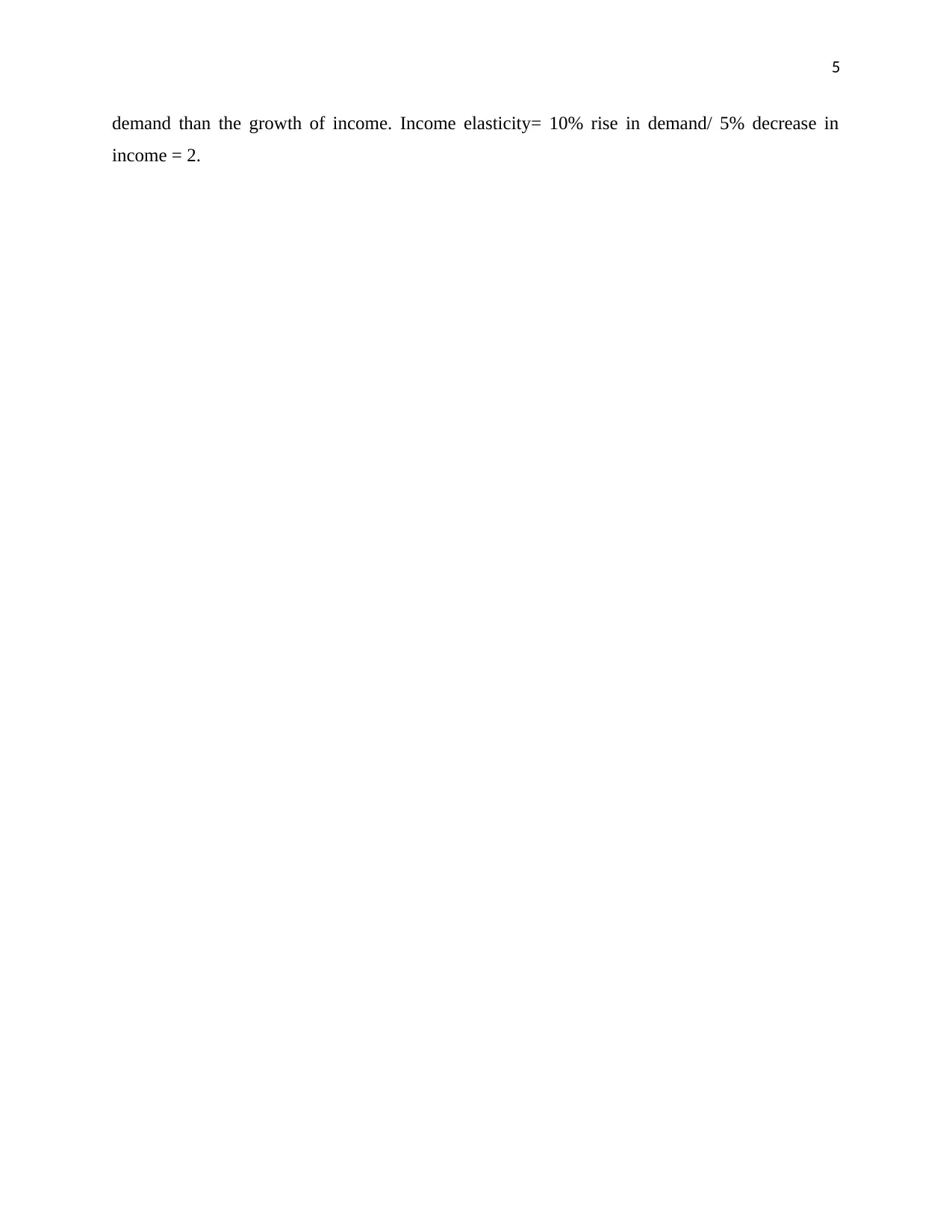
5
demand than the growth of income. Income elasticity= 10% rise in demand/ 5% decrease in
income = 2.
demand than the growth of income. Income elasticity= 10% rise in demand/ 5% decrease in
income = 2.
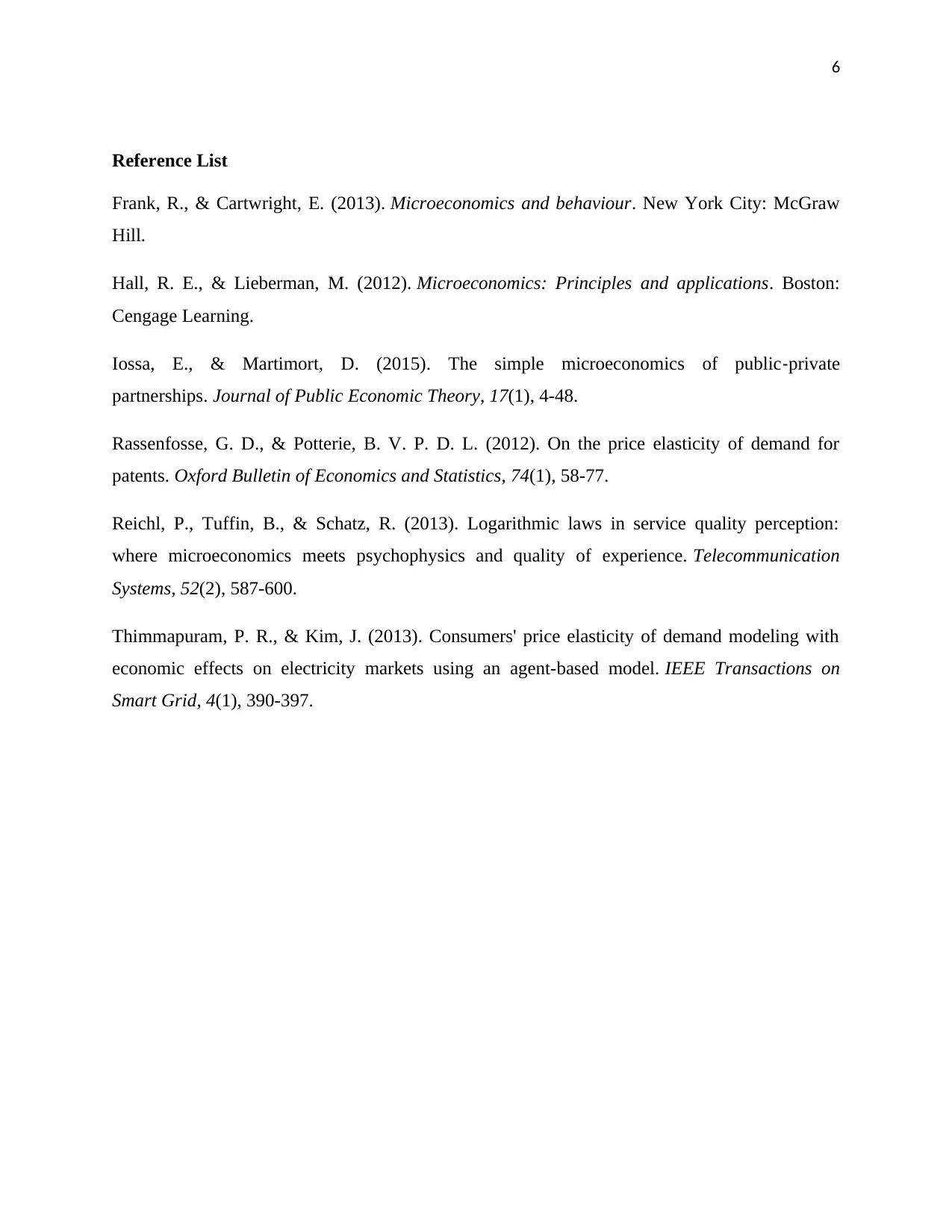
6
Reference List
Frank, R., & Cartwright, E. (2013). Microeconomics and behaviour. New York City: McGraw
Hill.
Hall, R. E., & Lieberman, M. (2012). Microeconomics: Principles and applications. Boston:
Cengage Learning.
Iossa, E., & Martimort, D. (2015). The simple microeconomics of public‐private
partnerships. Journal of Public Economic Theory, 17(1), 4-48.
Rassenfosse, G. D., & Potterie, B. V. P. D. L. (2012). On the price elasticity of demand for
patents. Oxford Bulletin of Economics and Statistics, 74(1), 58-77.
Reichl, P., Tuffin, B., & Schatz, R. (2013). Logarithmic laws in service quality perception:
where microeconomics meets psychophysics and quality of experience. Telecommunication
Systems, 52(2), 587-600.
Thimmapuram, P. R., & Kim, J. (2013). Consumers' price elasticity of demand modeling with
economic effects on electricity markets using an agent-based model. IEEE Transactions on
Smart Grid, 4(1), 390-397.
Reference List
Frank, R., & Cartwright, E. (2013). Microeconomics and behaviour. New York City: McGraw
Hill.
Hall, R. E., & Lieberman, M. (2012). Microeconomics: Principles and applications. Boston:
Cengage Learning.
Iossa, E., & Martimort, D. (2015). The simple microeconomics of public‐private
partnerships. Journal of Public Economic Theory, 17(1), 4-48.
Rassenfosse, G. D., & Potterie, B. V. P. D. L. (2012). On the price elasticity of demand for
patents. Oxford Bulletin of Economics and Statistics, 74(1), 58-77.
Reichl, P., Tuffin, B., & Schatz, R. (2013). Logarithmic laws in service quality perception:
where microeconomics meets psychophysics and quality of experience. Telecommunication
Systems, 52(2), 587-600.
Thimmapuram, P. R., & Kim, J. (2013). Consumers' price elasticity of demand modeling with
economic effects on electricity markets using an agent-based model. IEEE Transactions on
Smart Grid, 4(1), 390-397.
⊘ This is a preview!⊘
Do you want full access?
Subscribe today to unlock all pages.

Trusted by 1+ million students worldwide
1 out of 6
Your All-in-One AI-Powered Toolkit for Academic Success.
+13062052269
info@desklib.com
Available 24*7 on WhatsApp / Email
![[object Object]](/_next/static/media/star-bottom.7253800d.svg)
Unlock your academic potential
Copyright © 2020–2025 A2Z Services. All Rights Reserved. Developed and managed by ZUCOL.
